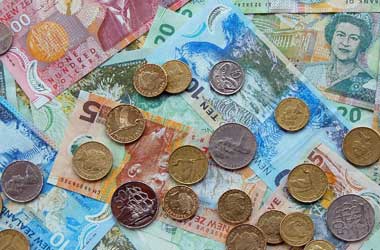 According to Federal Reserve Vice Chairman Richard Clarida, the central bank is on track to meet its economic goals by the end of 2022 and begin increasing benchmark interest rates once more in 2023. While he said the labor market must yet improve, Clarida stated that inflationary pressure is on pace to reach or surpass the Fed’s 2% target.
According to Federal Reserve Vice Chairman Richard Clarida, the central bank is on track to meet its economic goals by the end of 2022 and begin increasing benchmark interest rates once more in 2023. While he said the labor market must yet improve, Clarida stated that inflationary pressure is on pace to reach or surpass the Fed’s 2% target.
This lays the groundwork for the Fed to meet the “substantial additional headway” threshold it has established before beginning to increase rates. “Provided this perspective, and as long as inflationary pressures stay well rooted at the 2% longer-run objective… beginning rate normalization in 2023 would, under such circumstances, be totally compatible with our versatile average inflation targeting blueprint,” the policymaker said in a virtual presence at the Peterson Institute for International Economics.
Clarida, on the other hand, provided no timeline for when the Fed could begin to reduce its quantitative easing program. To ensure liquidity in the financial markets in the midst of the Covid crisis, the central bank has been purchasing $120 billion worth Treasury securities and mortgage-backed bonds every month.
While Clarida stated that authorities are considering when they may stop buying bonds, he merely stated that the people would be given enough time before a final decision is taken.
The remark has come against the back drop of mounting worresy about the economic recovery reaching a nadir in April 2020, and also a spike in inflation that has pushed price hikes far beyond the Fed’s goal. Clarida pointed out that core personal consumption expenditure prices — the Fed’s favored inflation measure — had been running at a 2.7% pace since February 2020, shortly before the Covid outbreak.
If his inflation forecasts come true, “then I think that… the essential conditions for increasing the benchmark interest rate will have been fulfilled by the end of next year.” With respect to rate projections, current market pricing has changed, with futures contracts linked to the Fed’s benchmark rate now suggesting just a 43.7% probability of a rise by the end of 2022, according to the CME Group.
With respect to rate forecasts, current market pricing has changed, with futures contracts linked to the Fed’s benchmark rate now suggesting just a 43.7% probability of a rise by the end of 2022, according to the CME Group. However, market attitude toward the Fed is fickle, and Clarida’s remarks, especially on inflation, suggest that a change may be imminent.
“If, as expected, core PCE inflation this year is at, or over, 3%, I would judge that considerably higher than a ‘modest’ violation of our 2% longer-run inflation target,” he added. “As with every forecast, there are risks, and I think the risks to my inflation forecast are to the positive side.”
In a framework established in 2020, the Fed said that it would accept a “modest” rise of inflation over 2% in order to achieve a complete and holistic employment objective. While the unemployment rate has fallen from a pandemic record of 14.8% to 5.9%, there are still 7.6 million fewer Americans working at the moment than before the crisis. ADP, a payroll processing company, announced on Wednesday that private companies created merely 330,000 jobs in July, far short of the 653,000 predicted.




